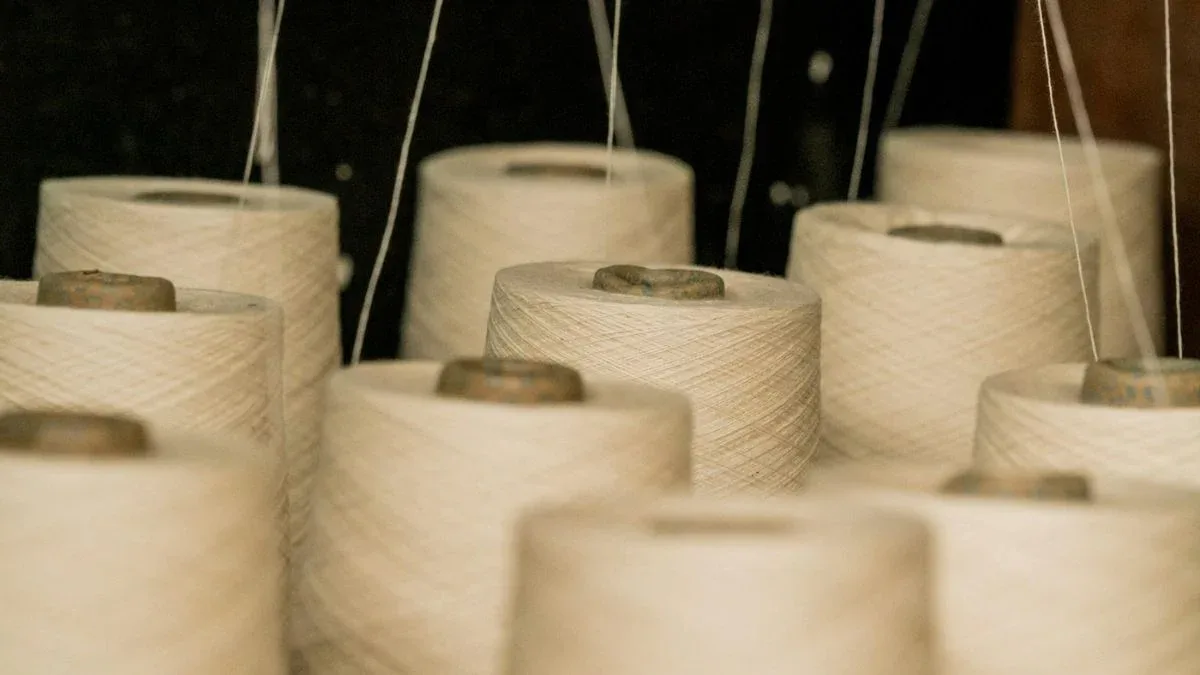Linen is one of the most trending fabrics in the fashion industry today. It is practical, trendy, and environmentally friendly, and this is what makes it popular in the eyes of many designers and fashion brands. When you intend to deal with the linen fabric, you ought to know where to obtain it, how it is manufactured and which one is superior to the other fabric.
A complete guide to choosing premium linen for style, comfort, and sustainable design
Understanding Linen: Why It’s a Designer’s Go-To Choice
The flax plant is used to make linen and grows naturally in most areas. It is light, breathable, crisp and can be worn even in hot weather. Shirts, dresses, trousers, jackets, covers on a table, and curtains are all made out of linen fabrics. The reason why designers like it is that the fabric is beautiful and sturdy. Linen of high quality is soft and strong to the touch, and it keeps its shape.
How is linen fabric made?
Linen starts with the flax plant. The farmers harvest the stems and undergo a process known as retting, in which fibres are parted. Then they dry the stems and pull the fibres out, and spin them into yarn. This strand is then woven into cloth. Every action must be taken seriously because any slight mistake would affect the integrity and the appearance. To ensure that the fabric is durable, dense and soft, a good linen fabric producer in India invests both in modern machines and well-trained employees.
Types of linen weaves
Not all linen looks the same. The difference comes from the weaving style.
- Plain weave provides a plain crisp finish and is applicable in shirts and lightweight garments.
2. Satin weave is very shiny and softer to the touch, which is nice in luxurious clothes.
3. Twill weave gives a diagonal pattern and additional durability, which can be used in jackets, trousers or heavier garments.
In the selection of fabric, brands must consider the type of weave, thread count, and weight. These parameters determine whether the fabric drapes softly, retains its shape, or is lightweight.
What Are the Key Advantages of Linen Fabric?
There is more than a desirable appearance in linen fabric. It allows the air to pass through it with ease and is therefore comfortable to wear during hot and humid weather. It keeps bacteria off naturally, and it also absorbs moisture without sticking to the skin. Linen also has the strength to ensure that after several years of use, it does not change its shape. To top it all, the smooth, shiny feel and the natural creases make linen look relaxed and stylish, and people are highly supportive of the linen.
The other benefit of the linen fabric is that it positively impacts the planet. Flax crops use less water and do not use a lot of pesticides compared with cotton. Linen is biodegradable and compostable; hence, no waste will be left behind after usage.
Finding the right supplier for premium quality linen
India is now a global linen production centre. The most popular linen fabric producers in India are located in Gujarat, Andhra Pradesh, and Punjab. These manufacturers offer both mass production and small bespoke production. When you want to be eco-friendly in your collections, you can collaborate with suppliers of organic linen fabrics to achieve sustainability objectives.
In the quest to locate one, request GOTS or OEKO-Tex certifications to determine whether the fabric in use is safe and environmentally friendly. It is advisable to always ask to be given swatches before making bulk orders. Feeling the samples assists you in testing the feel, softness, and strength of the fabric.
Checking the work of linen weavers in India
Every good fabric has behind it a skilled weaver. In India, linen weavers employ both sophisticated machines and primitive handlooms to make fabric that has a rich character. To ensure a quality product, brands are advised to ensure that the weavers are consistent in yarn, weave and finish. A trip to the mills or asking them to provide more thorough reports aids in establishing the longevity of the fabric. The premium results depend on the strength tests, shrinkage reports and colour fastness checks.
With high-quality linen, it is not just about how it looks but also where the fabric is made, what weave suits your design, and how sustainable your sourcing is. By understanding the benefits of linen fabric, designers and clothing brands can create collections that are distinct. The appropriate partner makes sure that each yard of fabric promotes creativity, quality, and responsibility.
Svarna is considered among the major linen fabric producers in India. Svarna has years of experience and professional linen weavers in India, providing designers and brands with the finest fabrics. They are also eco-friendly suppliers of organic linen fabrics. Svarna embraces a brand whose collections combine heritage, style, and sustainability, with traditional textures to contemporary finishes.
FAQs
1. How is linen fabric made?
It is created from flax plant fibres that are spun into yarn and woven into fabric.
2. What are the main advantages of linen fabric?
It is breathable, durable, moisture-absorbing, and naturally stylish.
3. Why should brands work with a linen fabric manufacturer in India?
They offer skilled linen weavers, organic options, and diverse types of linen weaves.



